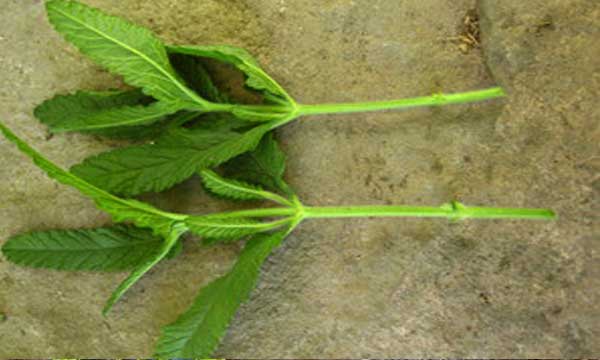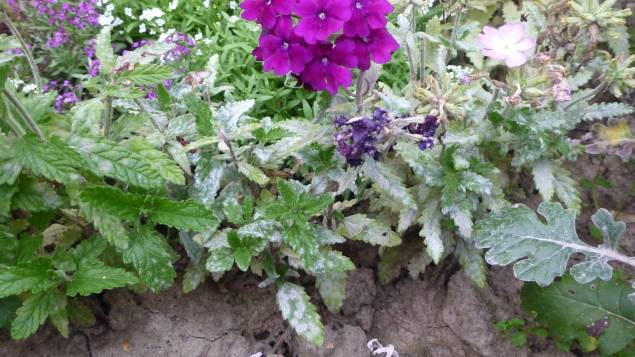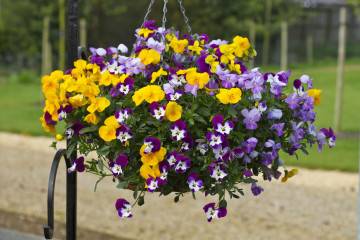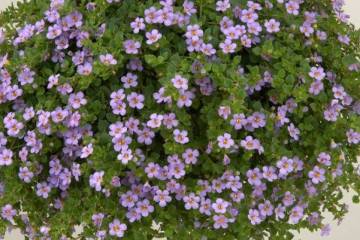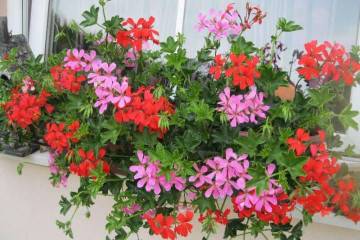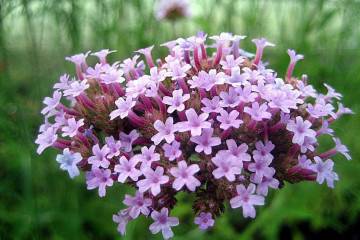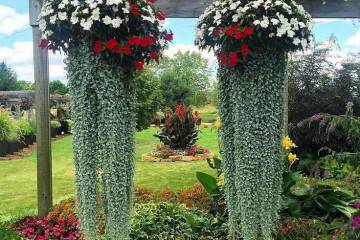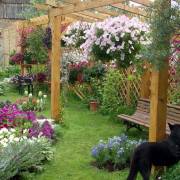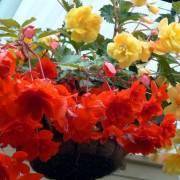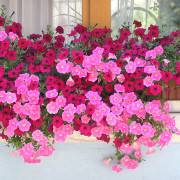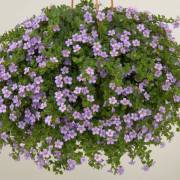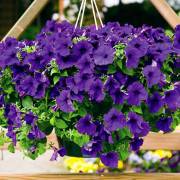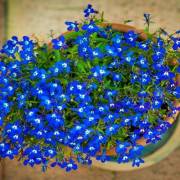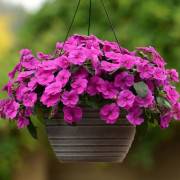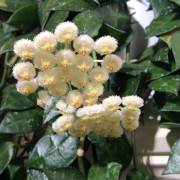Ampel verbena - growing in a pot, planting and care
Content:
Verbena is a spectacular plant that comes in a variety of species and colors. Ampel verbena is very popular among gardeners. It can be planted in a beautiful planter, and also used as a plant covering the soil. Further information on growing crops in the local area.
Verbena ampelous - growing
Propagate the culture by seeds or cuttings. It can be grown both indoors and outdoors as a ground cover plant.
Potting and care
Seedlings are planted in a container as follows:
- A drainage layer of expanded clay, small stones, broken shards is laid out on the bottom of the container.
- Fertile, loose soil is poured.
- A bush is planted with a lump of earth.
- Watered, mulched with peat.
To make the verbena bush beautifully, pinch the top over a 4-5 leaf. This technique helps to awaken the dormant lateral buds, from which new flowering shoots will grow.
The soil in the pot should be moist, but not wet. Waterlogging of the soil contributes to the appearance of pathogenic microorganisms. Every 2 weeks, the bushes are fed with a complex mineral fertilizer.
Features of planting plants in open ground
In the fresh air, pots with plants are taken out when the threat of frost has passed. Vervain is gradually taught to new conditions of detention. The planting period varies by region.
If ampelous vervain is planted as a ground cover plant, the pits are pulled out at intervals of 25-30 centimeters. When the lashes grow back, they are attached to the ground with staples. Additional roots are soon formed at the pinning site.
Verbena is a light-loving plant, therefore, it is planted in the most illuminated place. A composition in a flowerpot of several decorative flowering crops will look beautiful: geranium, nasturtium, verbena, petunias.
How to care for verbena after flowering
When the culture fades, the shoots are cut off, the plant is placed in a bright, cool room. As needed, the bushes are watered, feeding is not done. At the end of winter or at the beginning of spring, the plant begins to cuttings, prepare for the new season.
Cuttings of ampelous verbena
One of the quickest ways to propagate a culture at home is by cuttings. This method is usually resorted to at the end of winter. For this, shoots with 4-5 internodes are cut. The lower leaves are removed, only the upper ones are left. Planting ampelous verbena and caring for it is not a big deal.
Planting in pots
Cuttings are planted as follows:
- A substrate consisting of peat, sand, perlite is poured into the pot.
- The lower sections of the shoots are dipped in the growth enhancer powder.
- Depressions are made, cuttings are planted to the lower internode.
- Watered, covered with earth.
- Cover the container with plastic wrap.
After about 2-4 weeks, the shoots will take root, young leaves will begin to appear on them.
How many pieces to plant in pots
One stalk uses 1.5-2 liters of soil. 2-3 shoots are planted in a pots with a volume of 5 liters; volume of 7 liters - 4 plants. 6-8 bushes are planted in a 10-liter pot.They should be equidistant from each other.
Verbena ampelous: growing from seeds
Purchase seed from a flower shop. In this case, the plants are guaranteed to grow as stated in the variety description. When self-collecting seeds and growing a new plant from them, not all the declared characteristics can be transferred to new bushes.
Verbena after flowering and seed collection
After flowering, the shoots are cut off to 10 centimeters, the plant is brought into the room before the onset of frost. Keep bushes in a bright but cool place in winter. Occasionally pour over water at room temperature. Flowering will begin earlier than the flowering of the seedlings.
Collecting seeds is started after the bolls have darkened. They are scattered on a newspaper or cloth, which is placed in a warm, ventilated place. Seed material is stored in paper bags.
Sowing with seeds
You can sow crops at the end of winter. For growing crops, a low wooden box is selected. Seeds are planted in it as follows:
- Loose earth is poured.
- Seeds are spread over the surface.
- Spray with water from a spray bottle.
- Glass is placed on top of the box.
The container with crops is kept at a temperature of 20-25 ° C. Every day, the glass is removed, they wipe it and the walls of the box from condensation. This is to prevent the formation of fungus.
After about 2 weeks, sprouts will appear. After that, the temperature is reduced to 16-18 ° C. Water the seedlings as needed. When 2-3 true leaves appear on the plants, they are seated in separate small containers.
Diseases and pests
Ampelous verbena has good immunity, but sometimes it is affected by some diseases and pests. For example, if the weather is too dry and hot, a spider mite may appear. It is washed off with the pressure of water. If that doesn't work, use insecticides.
With frequent and abundant moisture, putrefactive microorganisms may appear in the soil. From falling on the leaves of cold drops of water, the plant is affected by powdery mildew. To prevent diseases, agrotechnical measures are correctly carried out, they are sprayed with fungicides before flowering.
Verbena ampelous is a flowering plant that can decorate with its appearance a terrace, balcony, loggia, flower bed. It is planted in a beautiful pots, hung, placed in the open field as a ground cover crop. Growing ampelous verbena is an easy task. The flower is easy to propagate by cuttings or seed. A pot with a flower can be brought indoors for the winter, and new bushes can be grown from it next season.


